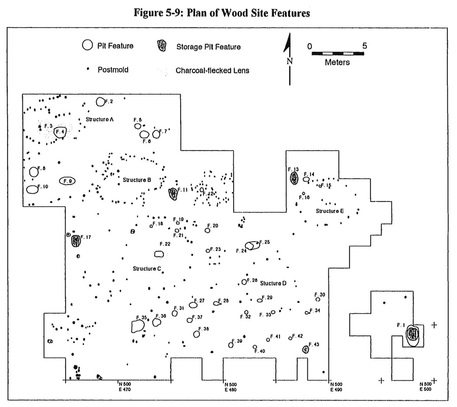
 Martin Gallivan's (1999) dissertation includes information on several Woodland and Late Prehistoric sites in Virginia with structural remains (see also his later paper in American Antiquity). The figure to the right (from Gallivan 1999:197) shows the distribution of postmolds and features exposed in excavations at the Wood site (44-Ne-143), Nelson County. Gallivan used multiple approaches to analyze the distribution of posts, identifying the outlines of five elliptical structures (Structures A, B, C, D, and E) of varying size. Radiocarbon dates from features at the site suggest the structures were constructed around AD 1000-1050. The Wood site structures will be Structures 2237-2241 in the database.
0 Comments
 A 2008 report prepared by New South Associates (edited by R. Jeannine Windham, Christopher Espenshade, and Julie Coco) details excavations and analysis of materials associated with the remains of Middle Woodland household at the Hardin Bridge site (9-Br-34) in northwest Georgia. The report is available on Chris Espenshade's Academia.edu page. The preserved architectural features at the site did not allow the unambiguous definition of the outlines of a single structure. Based on artifact analysis, the authors interpret the Middle Woodland remains at the site to be the product of single household that would have occupied a single residential structure. That structure was likely an oval or rounded rectangular structure measuring about 9m in width and 11m or 20m in length (Windham et al. 2008). The illustration above (Figure 11.1 from Windham et al. 2008:423) shows the outline of a structure with larger dimensions in blue and the most likely candidate for a smaller structure outlined in pink. The Hardin Bridge structure will be added to the database as Structure 2234.
Citation
Although the database is still early in its development, the "how do you cite it?" question has already popped up. I did a little poking around online and found a few examples of database citations. None seemed to exactly fit the EWHADP situation, however, as they referred to databases of material (i.e, articles) that already had separate citations. I came up a general format for a "suggested citation" following this example: White, Andrew A., and Benjamin Steere. EWHADP Database 2014_03_12. Eastern Woodlands Household Archaeology Data Project, 12 March 2014. Web (www.householdarchaeology.org). Accessed [day] [month] [year]. Ben Steere agreed to be co-author because of the volume of previously-compiled data that he contributed to the database. I may change the format of the suggested citation based on advice I get from others. I like this format, however, because it clearly identifies which "issue" of the database is being cited. This is useful because the database will continue to grow and the information associated with each listing may change from one version to the next. It will be important to (1) be able to specify which version was consulted and (2) keep those older versions available. "Most Wanted" I have added a Most Wanted section to list publications that I would like to have a look at because they reportedly contain data on structures that I would like to include in the database. As you might guess, many of these will be contract reports that may be impossible to get through ILL or other conventional means. I'm hoping that those of you interested in this project will check this page from time to time to see if you have any of the "most wanted" publications either on your bookshelf or (better yet) in an electronic format on your computer. Please remember that I'm interested in providing open access to information, not documents, through this site. Many of the "gray literature" publications that contain primary data on structures also contain information (such as precise site locations) that should not be openly distributed. Protecting site locations is my main rationale for using the center of a county as a site's "location" for purposes of plotting in GIS. FAQ I have added a Frequently Asked Questions (FAQ) page. Currently, this page contains only two questions:
The Reid and Rajnovich (1991) paper contains pointers to publications with data on several Woodland and Archaic structures in the region. I've never been there, but based on its entry in Large Canadian Roadside Attractions it looks like a nice place to visit.
A 1975 paper by James Morton and Jeff Carskadden in Ohio Archaeologist describes the remains of one or more post structures from a site in Muskingum County, Ohio (Morton and Carskadden 1975). The outlines of the structure(s) represented by the posts are not particularly clear. The authors suggest that some of the posts may belong to a circular or semi-circular structure with two central posts (see illustrations below from Carskadden and Morton 1975). The posts could also mark the location of a large, open structure or several smaller arc-shaped structures.
Neither a name or a number is given for the site in the original paper. I found the site number 33-Mu-29 associated with the radiocarbon date (I-7604) discussed in the paper in the Kentucky, Ohio, and West Virginia Radiocarbon Database maintained by Cultural Resource Analysts.
I've been invited to give a short presentation on the EWHADP for the DINAA (Digital Index of North American Archaeology) workshop that will be going on at the University of Tennessee this week. DINAA is operating through Open Context, which is a web-based, open access initiative that "reviews, edits, and publishes archaeological research data." It is possible that this site and the information it contains will eventually be linked to DINAA in some way or another. There could be several advantages to such a linkage. The most obvious one, of course, would be a general increase in the ease of access to information for everyone. Open access is good. Period. I'm not yet sure exactly what I'm going to talk about. Since the site is new, I will probably focus on my motivations for creating it and what I hope it accomplishes. I will be able to give my opinions on the downside of the regionalization of research data and agendas and the upside of blurring the lines between regions by linking smaller scale datasets into larger ones. Whatever the specific content of my DINAA presentation, it will be a relief to talk for an entire 15 minutes without attempting to describe complex systems theory. Also, since it will be via Skype, I can wear slippers and be almost certain that I won't miss my connecting flight.
|
AuthorAndrew A. White Archives
January 2016
Categories
All
|
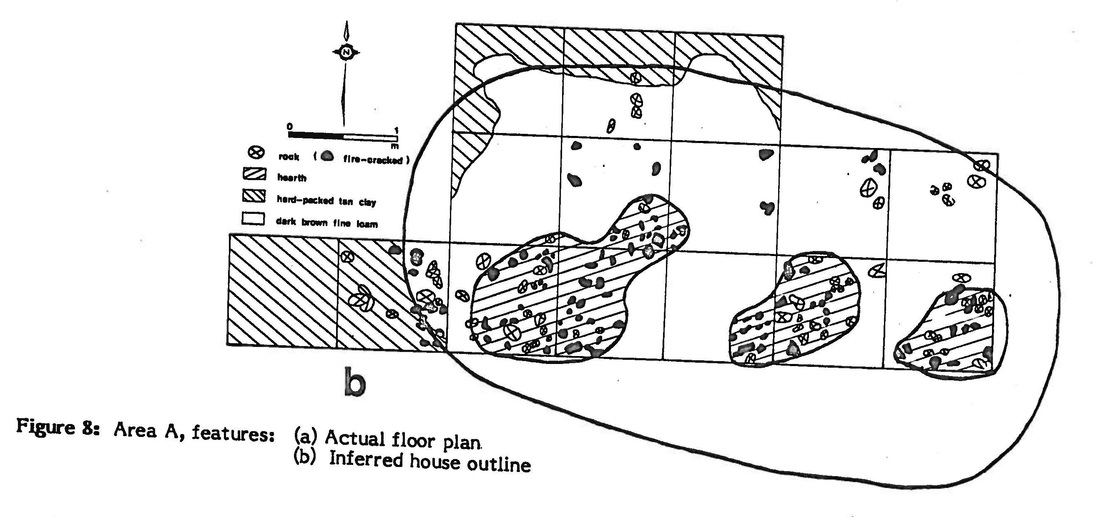
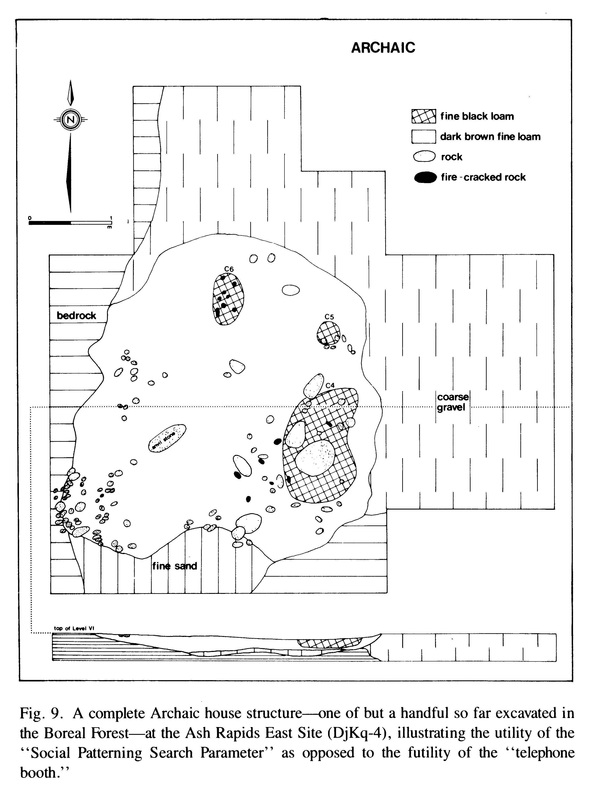
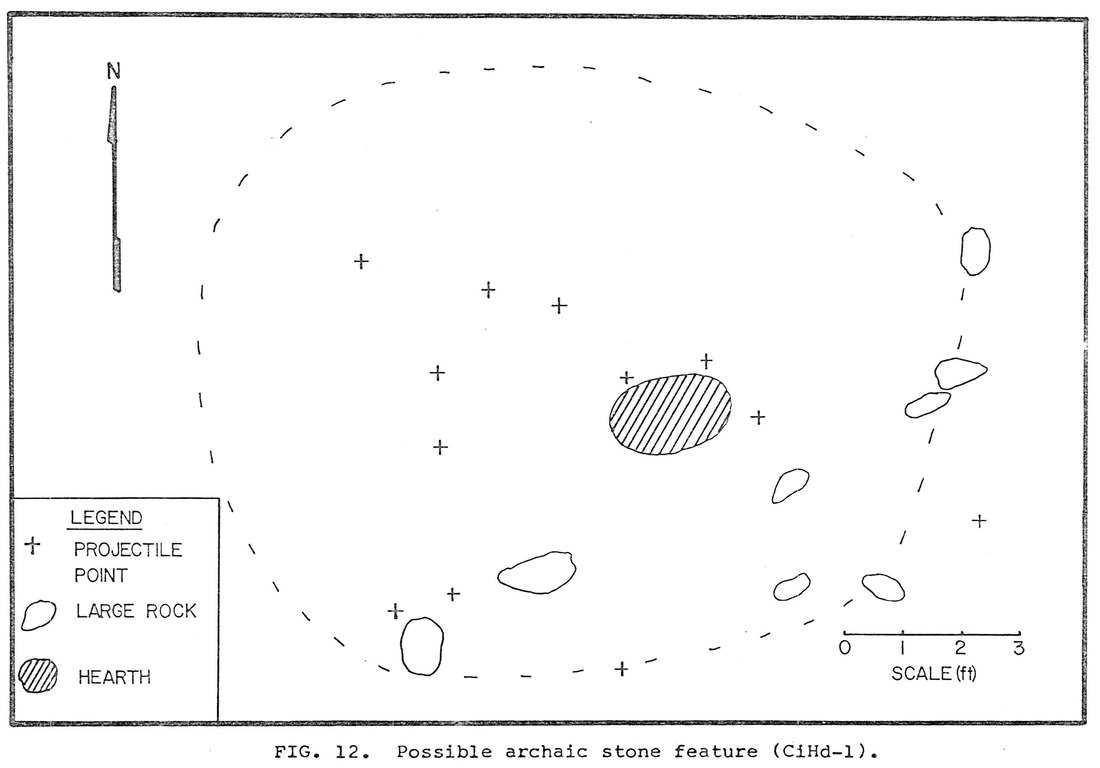
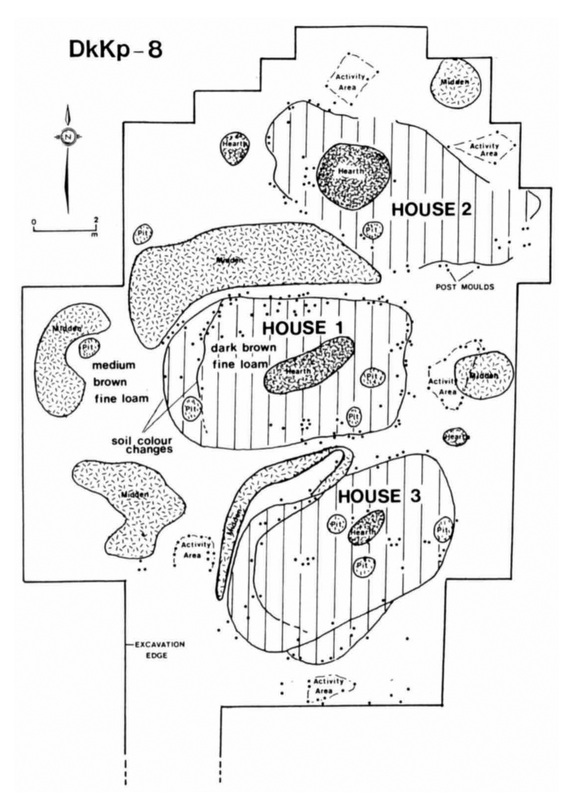
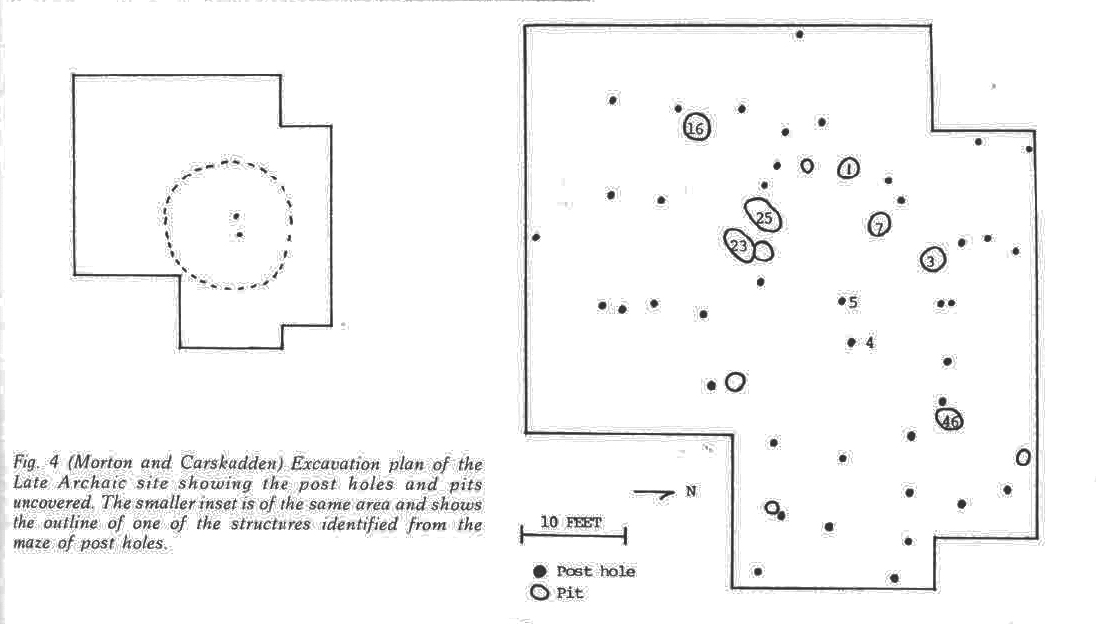
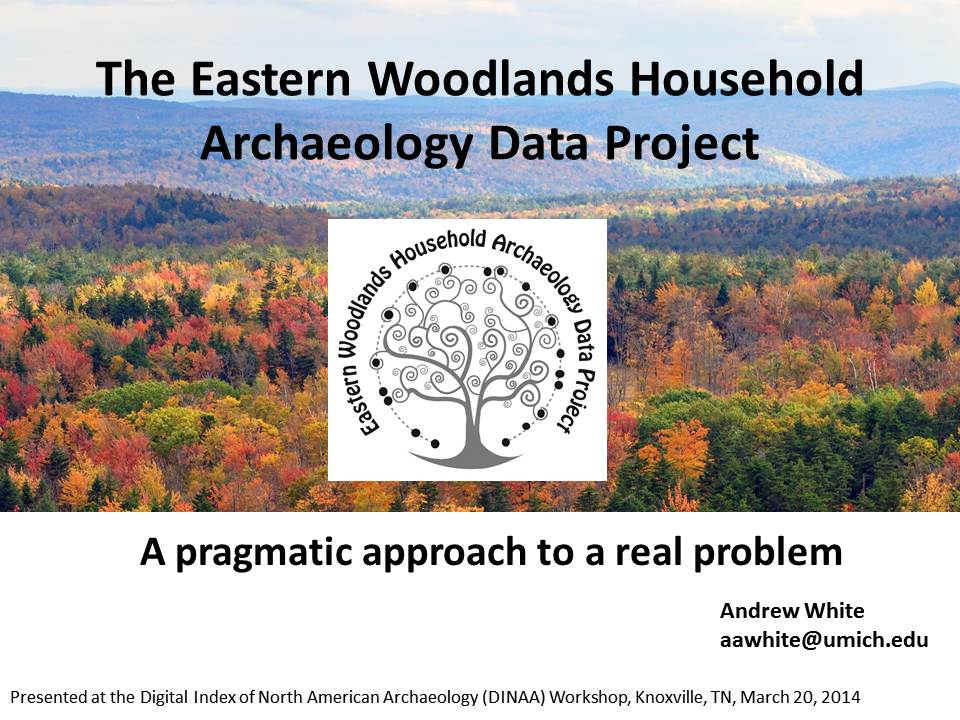
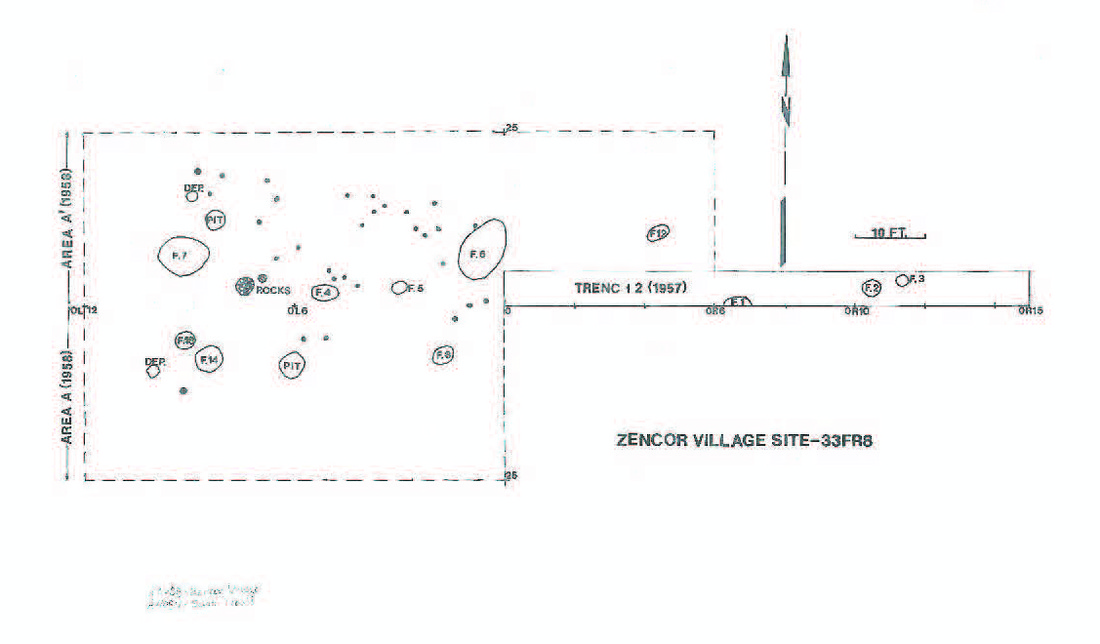
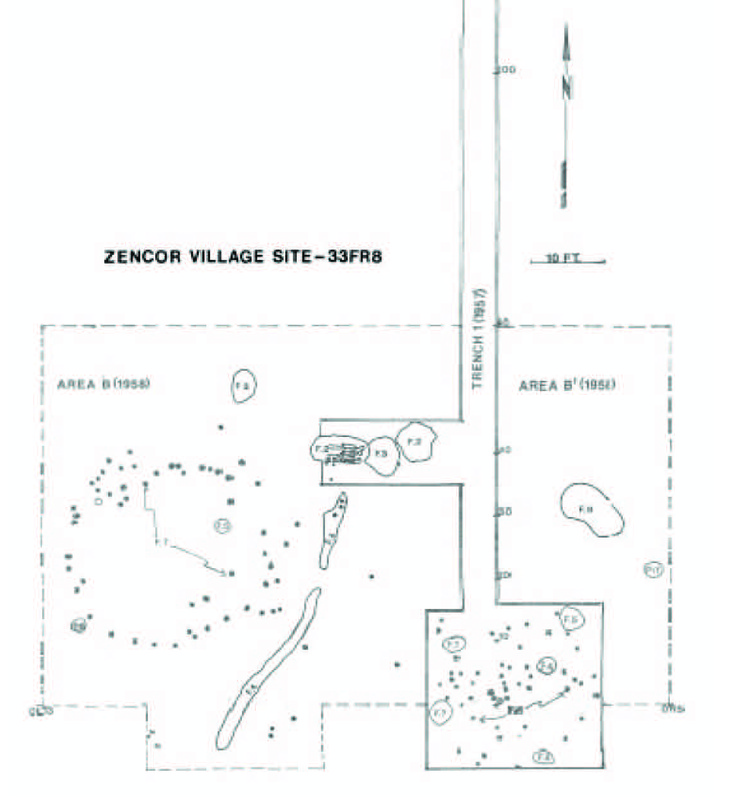
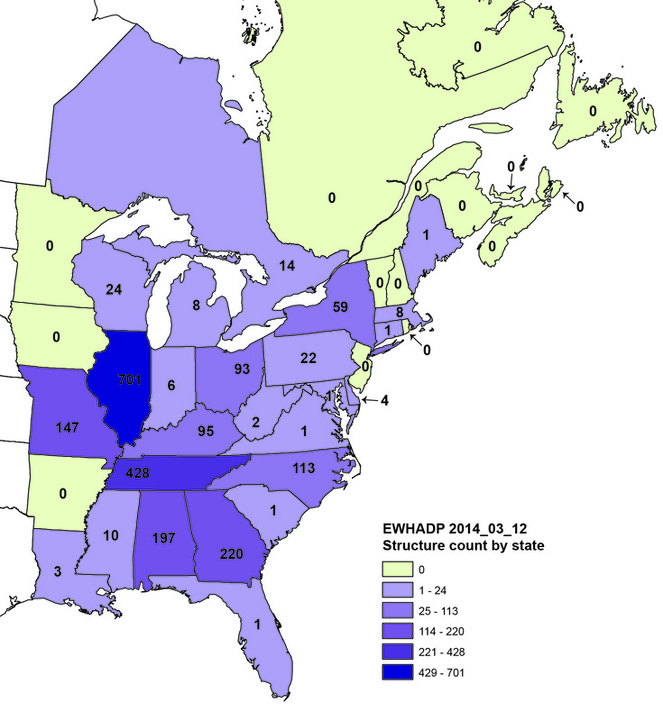
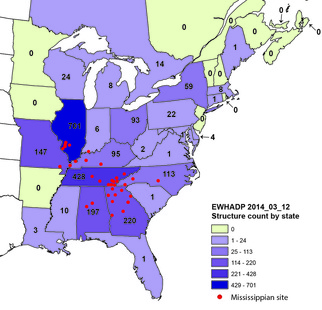
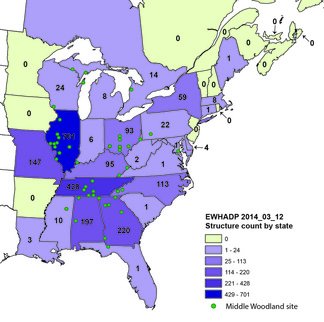
 RSS Feed
RSS Feed
